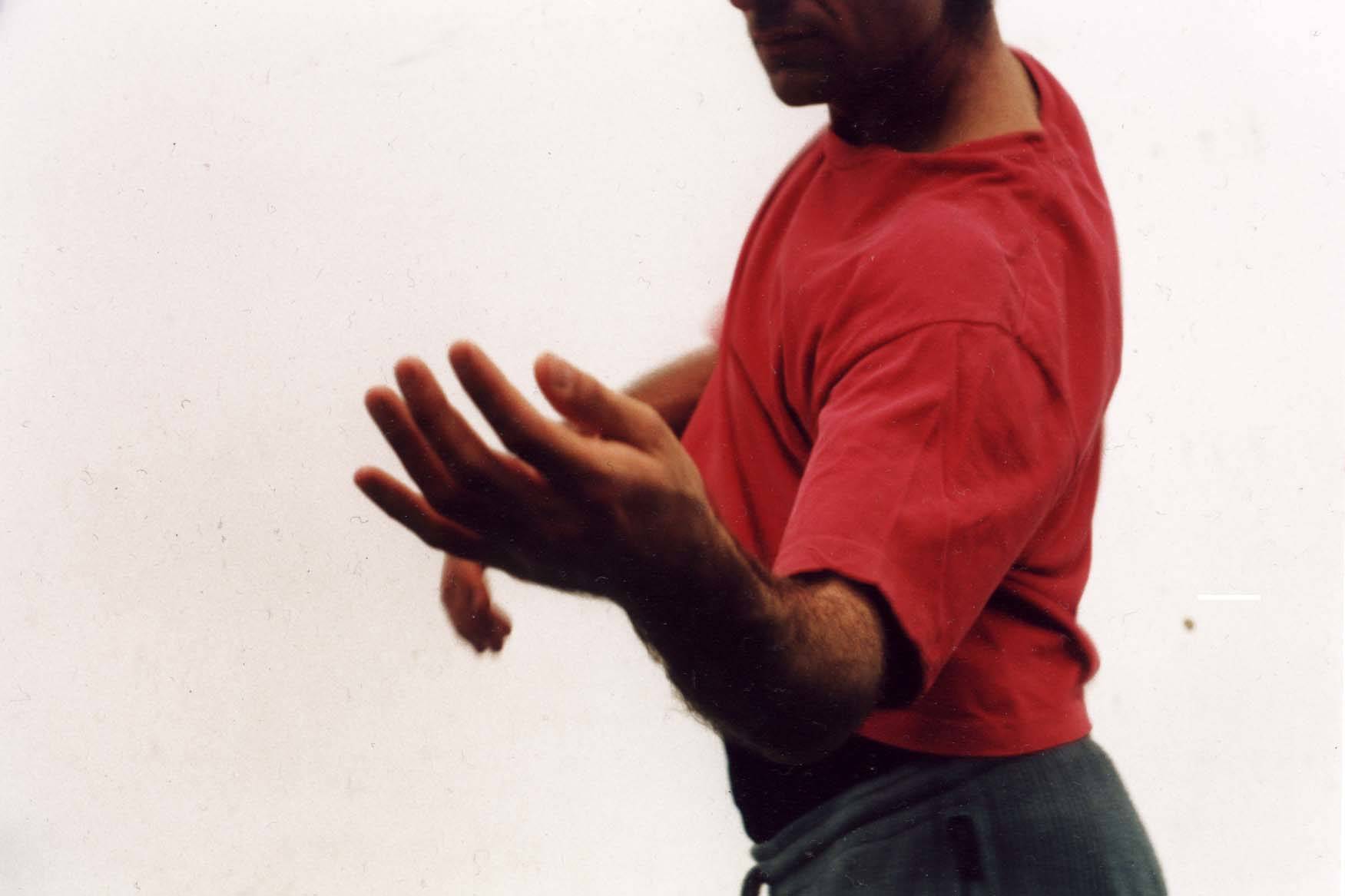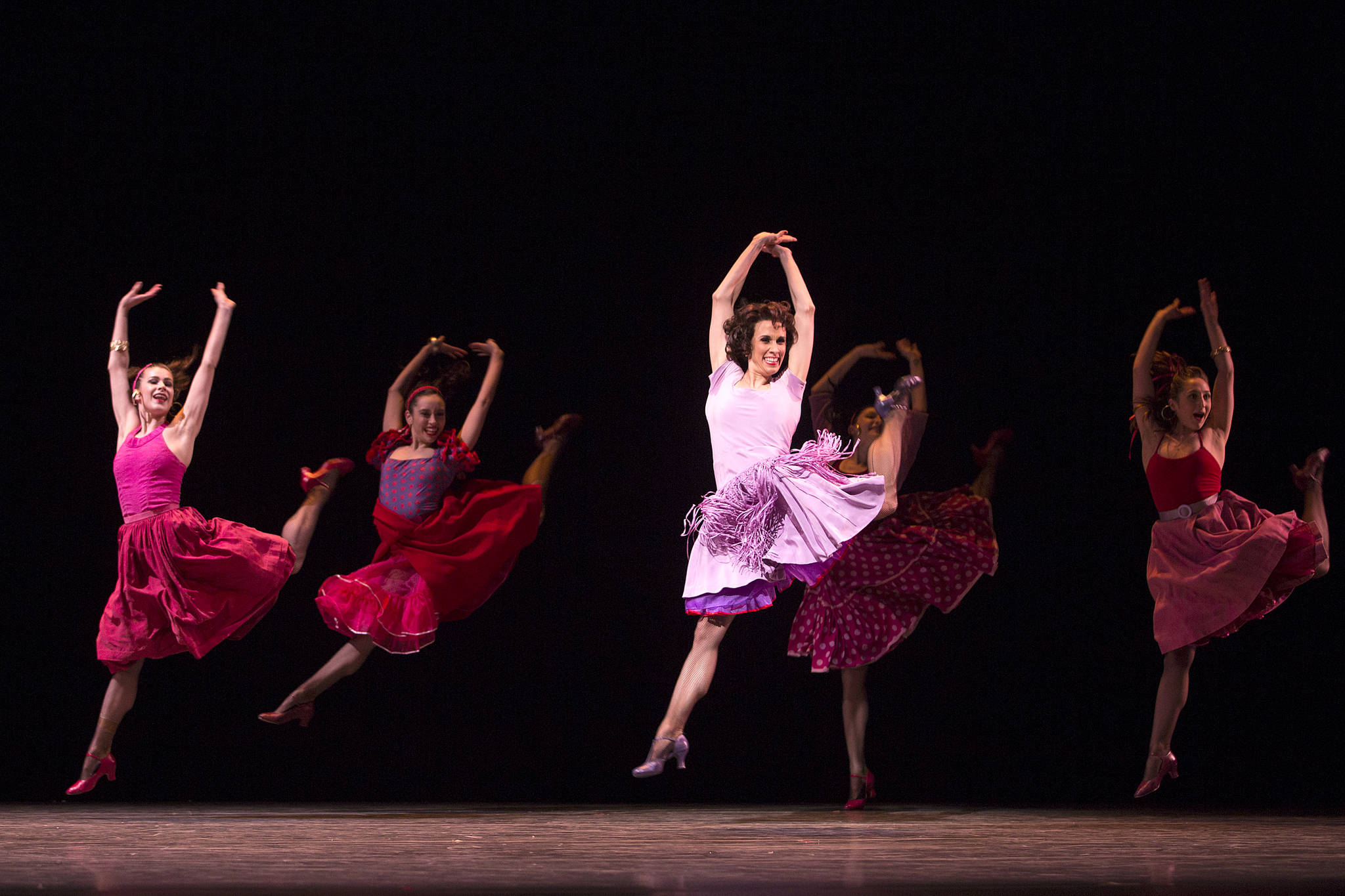Alana O. Rogers’ new work, Into Ice, is less about climate change than about the ecosystems of cold climates. But in showing us something of that environment, she makes it easy to recognize how complex that world is, how fragile, and how flexible.
For many people, their images of the Arctic are motionless pictures—mountainous glaciers, open snowfields, jagged icebergs. Rogers’ views are much more active, fleshed out with the erratic nature of transformation, with human movement as a stand-in for all kinds of evolutionary processes. And just as snow blindness can trick us into thinking we’ve seen something that isn’t there, many of the images the choreographer has devised for Into Ice can be interpreted in multiple ways.
The work opens with just such a trick, with what appears to be clouds or fog hovering at ground level. Made of translucent paper, they mask animal life behind them. The backlit groups cast shadows on the set pieces, like Balinese Wayang Kulit puppet shows, full of feral activity. The performers stretch, twitch, scratch, and nuzzle, almost like dens of puppies or foxes. It’s only after reading the program notes that we realize this is an avalanche field, and the creatures we’ve been watching are trapped in the snow.
As the work unfolds, more situations contain that sense of ambiguity. Are we watching animals, humans, or the forces of nature itself? Are two dancers playing or fighting, or possibly both? Are we watching one long process of evolution and change, or multiple scenes in simultaneous flux?
As the saying goes, the only constant is change, and Into Ice is full of transition. Groups form and fall apart as the performers shift their focus from their ensemble to themselves. What can read as pack behavior can also seem like a choreographic convention for group movement, both a playful moment and a formal construct. Rogers has crafted detailed examples of canid behaviors, showing us the fluidity of their relationships to one another and their environment, shifting from playing to hunting and back again, seemingly without hesitation. In an extended section toward the middle of the work, we watch two species compete, possibly wolves and caribou, one loping along hugging the ground and the other bounding high off the floor. The inevitable encounter between two of them doesn’t “act out” their combat as a nature film might, but it is as disturbing nonetheless.
While most of the action in the dance seems grounded in animal movement, there are distinctly human moments throughout the work. In an action as simple as running, we watch the group gradually shift from an animalistic loping gallop to an upright striding run. As the shift happens, almost all the dancers leave the group until only Mariko Nagashima remains. As she straightens her back and raises her head to look forward while she runs, we see a metaphor for evolution, and her seeming pleasure in locomotion triggers the same response in us—we feel the air whistle by our own ears as she takes another lap around the stage. In a humorous extension of this sequence, she seems to be the last to realize that she has changed, looking quizzically at her hands and spinning around to find her missing tail.
Rogers has succeeded in making a dance work that takes on a sense of natural timing, rather than trying to find an artificial rhythmic structure. Nico Tower’s score, played live by the composer, works best when it suggests the erratic nature of Arctic weather, winds soughing and ice creaking.
Into Ice is not an ecological sermon, but it does present the audience with a challenge: to consider that an environment this flexible and full of life could be easily pushed off-kilter, if we’re not paying attention. Velocity Dance Center. 1621 12th Ave., 325-8773, velocitydancecenter.org. $20–$25. 8 p.m. Fri., Nov. 18–Sat., Nov. 19. Pre-show installation at 7:30 p.m.
dance@seattleweekly.com








